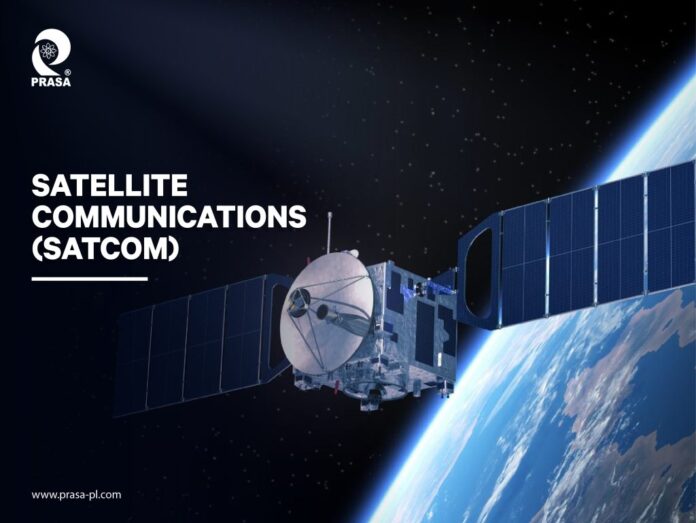Satellite Spectrum Explained: Why Most Countries Avoid Auctions.
Satellite communication (satcom) services are poised to become crucial for enhancing connectivity, especially in low-lying and rural areas and regions prone to natural disasters. These services use satellites in orbit to provide connectivity on the ground without requiring wires, offering an alternative to terrestrial networks like cable, fiber, or digital subscriber line (DSL).
Recently, Union Communications Minister Jyotiraditya Scindia announced that spectrum for satellite communication in India would be allocated “administratively” rather than through an auction process. This decision came in response to a proposal by Reliance Jio to auction the satellite spectrum. The administrative allocation was seen as a victory for companies like Elon Musk’s Starlink, highlighting the unique nature of satellite spectrum that makes auctions unfeasible for individual countries.
Unlike terrestrial spectrum used for mobile communication, satellite spectrum does not have national territorial limits. Instead, it operates on an international scale and is managed by the International Telecommunication Union (ITU), a specialized agency of the United Nations (UN). Due to its international character, the spectrum is coordinated globally, making it impractical for any one country to auction it exclusively.
Under the Telecommunications Act, 2023, in India, spectrum for satcom is listed in the first schedule and is to be assigned through an administrative process rather than auctioned. This means the spectrum is allocated without a competitive bidding process. The Department of Telecommunication (DoT) tasked the Telecom Regulatory Authority of India (Trai) with devising a methodology to assign the spectrum. While exploring pricing models, Jio argued that administrative allocation might not ensure a level playing field between satellite and terrestrial services. Elon Musk countered, stating that an auction process for this spectrum would be unprecedented since the ITU designated it as shared spectrum for satellites.
Satcom services provide wider coverage and a more resilient network compared to terrestrial broadband. Despite potentially higher latency, satcom can cover extensive areas without requiring much physical infrastructure. This capability allows communication networks to reach remote locations inaccessible by mobile telephony. As satcom services become mainstream, they are expected to benefit rural and disaster-prone areas by ensuring constant connectivity.
Satellite-based internet is also believed to be more resilient than terrestrial-based services because it relies on fewer ground-based components. Consequently, satellite equipment is less susceptible to damage from extreme weather events, enhancing the reliability of communication networks.
The satcom sector in India is poised for significant growth. A recent report by KPMG in India estimates that the sector, currently valued at $2.3 billion annually, will expand to $20 billion by 2028. India ranks fourth globally in terms of investments in the satcom sector. According to Morgan Stanley, around 290.4 million households in India remain untapped with broadband, presenting a vast market opportunity for satellite operators.
Understanding the distinction between spectrum for terrestrial networks and satellite communication is crucial in addressing why administrative allocation is preferred over auctions. For terrestrial mobile services, spectrum is exclusive to a single mobile operator in a specific geographical area and cannot be shared among operators. In contrast, satellite spectrum is non-exclusive and can be used by multiple satellite operators to serve the same geographical area. This non-exclusive nature makes administrative allocation more practical for satellite spectrum.
Although most countries prefer administrative allocation for satellite spectrum, a few, including the United States, Brazil, and Saudi Arabia, have experimented with auctions. However, these experiments highlighted the infeasibility of the auction process for satellite spectrum. The US, for instance, conducted an auction for satellite spectrum in 2004 for three domestic orbital slots for broadcasting services but has since reverted to administrative assignment. The annual regulatory fee for Very Small Aperture Terminal (VSAT) and equivalent C-Band antennas in the 12 GHz and 14 GHz frequencies is $595 per license or authorization.
Similarly, Brazil amended its regulatory framework in 2020, replacing satellite auctions with administrative licensing. While satellite landing rights are still assigned through bidding, the spectrum for satellite services is not auctioned separately. Saudi Arabia recently conducted an auction in the S-band (2 GHz to 4 GHz), which is used for mobile satellite services (MSS) as well as weather and air traffic control applications. The technical characteristics of the S-band, which allow for exclusive assignment for MSS, made the auction feasible, akin to terrestrial mobile services spectrum auctions.
The administrative allocation of satellite spectrum, as opposed to auctions, aligns with the international and non-exclusive nature of satellite communication. This approach ensures that the spectrum is managed effectively and can be used by multiple operators to provide widespread and resilient connectivity. As satcom services continue to grow, especially in countries like India, the focus remains on ensuring equitable access to spectrum while fostering technological advancements and expanding market opportunities.

